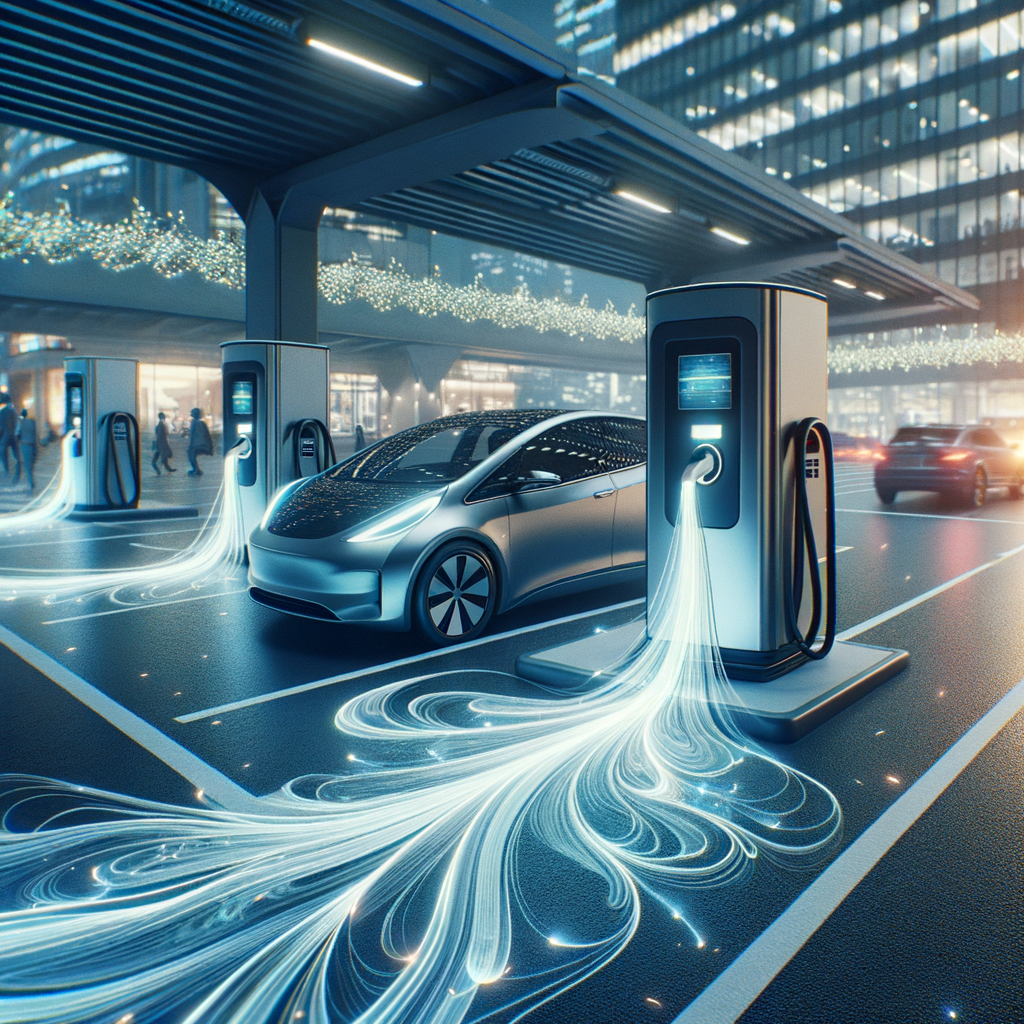The Reality of Public EV Charging Speeds: Expectations vs. Actual Performance
Title: Study reveals that public EV charging times are not as quick as expected
The Reality of Public EV Charging Speeds: Expectations vs. Actual Performance
Electric vehicles (EVs) are rapidly becoming a staple on roads worldwide, with the promise of a greener, more sustainable future driving their adoption. Part of the allure of EVs is the convenience of public charging stations, which are often touted as quick and efficient. However, a recent study has shed light on the actual performance of these public EV charging stations, revealing that they may not be as fast as consumers expect.
Despite this, there is an optimistic view to be taken from these findings. The study, which analyzed data from thousands of charging sessions across various networks, found that the average charging time was longer than the advertised rates. While this might initially seem disheartening, it’s important to understand the context behind these numbers.
Firstly, the speed of charging can be influenced by a multitude of factors, including the type of charger used, the initial battery level, and even the weather. Fast chargers, also known as Level 3 chargers, are designed to provide a substantial amount of range in a short period. However, if a battery is nearly depleted or if the temperature is extremely cold, charging times can be affected. Moreover, the charging speed slows down as the battery gets closer to full capacity to protect the battery’s health, which can extend the overall charging time.
Nevertheless, the industry is responding to these challenges with innovative solutions. Advances in battery technology and charging infrastructure are ongoing, with newer models of EVs and chargers boasting faster charging capabilities. Manufacturers are working tirelessly to improve the efficiency of batteries, allowing them to charge more quickly and retain more power. Additionally, the rollout of ultra-fast charging stations is set to revolutionize the market, with some capable of delivering up to 80% charge in just 20 minutes under optimal conditions.
The study also highlights the importance of setting realistic expectations for consumers. While the dream of a five-minute full charge may still be on the horizon, EV owners can plan their charging sessions with more accuracy, thanks to the wealth of data now available. Many EVs and charging networks offer apps that provide real-time information on the status of chargers, allowing drivers to optimize their charging times and locations.
Moreover, the growing network of public charging stations is a testament to the commitment of governments and private companies to support the transition to electric mobility. As the infrastructure expands, accessibility to chargers increases, reducing the likelihood of queues and wait times at charging stations. This expansion, coupled with the push for renewable energy sources to power these stations, reinforces the environmental benefits of EVs.
In conclusion, while the study indicates that public EV charging times may not always meet expectations, the future remains bright for electric mobility. With continuous improvements in technology and infrastructure, along with a better understanding of charging dynamics, the gap between expectation and reality is set to narrow. The journey towards a fully electric future is in motion, and with each innovation, we move closer to realizing the full potential of electric vehicles. Optimism is warranted as the industry learns, adapts, and accelerates towards a more sustainable and efficient transportation ecosystem.
Charging into the Future: How Slow Public EV Charging Impacts Consumer Adoption
Charging into the Future: How Slow Public EV Charging Impacts Consumer Adoption
In the race to embrace a greener future, electric vehicles (EVs) have surged to the forefront of consumer consciousness. With the promise of reducing carbon footprints and slashing fuel costs, EVs seem poised to overtake their gasoline-powered counterparts. However, a recent study has cast a spotlight on a growing concern: public EV charging times are not as quick as expected, potentially putting a speed bump on the road to widespread adoption.
The study, conducted by a leading transportation research group, found that the average time it takes to charge an EV at a public station is significantly longer than manufacturers’ claims. This discrepancy arises from a variety of factors, including the type of charging station, the current state of the vehicle’s battery, and even the weather. Despite this, the findings have not dampened the enthusiasm for EVs, as the industry and governments alike are taking strides to address these challenges.
As consumers become more environmentally conscious, the demand for EVs continues to grow. This surge in interest has led to an increase in public charging infrastructure, with stations popping up in urban centers, shopping malls, and along highways. Yet, the reality of longer-than-anticipated charging times could deter potential EV buyers who are concerned about the convenience factor.
Nevertheless, the industry is responding with innovation. Advances in battery technology and charging systems are gradually reducing the time it takes to power up an EV. High-speed charging stations, capable of delivering much quicker charges, are becoming more prevalent, although they are still not as widespread as the slower Level 2 chargers that are commonly found in public areas.
Moreover, the study’s findings have ignited a conversation about the need for better consumer education. Many new EV owners may not be fully aware of the nuances of EV charging, such as the fact that charging times can vary widely based on the specific vehicle and charger. By providing clearer information, manufacturers and charging station operators can set more realistic expectations for consumers, thereby improving the overall EV experience.
Governments are also playing a pivotal role in accelerating the transition to electric mobility. Incentives for both consumers and businesses to invest in EVs and charging infrastructure are increasing. These range from tax breaks and rebates to grants for installing charging stations. Such initiatives not only make EVs more attractive but also encourage the development of faster, more efficient charging solutions.
Despite the current speed bumps, the outlook for EVs remains optimistic. The industry is evolving rapidly, and with each passing year, the technology improves and becomes more accessible. The study’s revelations serve as a catalyst for change, spurring on enhancements in charging technology and infrastructure that will ultimately make EVs more user-friendly.
In conclusion, while public EV charging times may not yet meet everyone’s expectations, the wheels of progress are turning. With ongoing advancements and a collective effort from automakers, governments, and consumers, the future of EV charging looks bright. As we charge into the future, the journey toward a fully electric transportation system continues, promising a cleaner, more sustainable world for generations to come.







